“With all art expression, when something is seen, it is a vivid experience, sudden, compelling, and inevitable.” – Ansel Adams
I have compiled annual “favorites” collections for almost ten years. Each year I think this will just be an exercise in selecting photographs, and each year I rediscover that it is more than that – an opportunity to reflect on growth and new ways of looking at the world, a chance to think forward about what is yet to come, a time to recall a year of places and experiences and friendships.
It is a hard to distill a year’s work down to a few photographs, and I’m afraid that I can’t reduce the number to the extent that some can. This year I have – painfully! – gotten it down to 18 images, which is perhaps still too many. But it is 25% fewer than the 24 I shared last year! (Adams also said, “Twelve significant photographs in any one year is a good crop.” So feel free to regard up to a half dozen of these as being insignificant! ;-)
Many things affected my final selection. High on the list is how others – including many of you – responded to my photographs. I often say that the photographer is the person least able to objectively view and understand his/her own work, and I value the feedback and response that you share with me. On the other hand, I like to include some photographs that get less attention because I believe in them. I also include examples from my diverse range of subjects – people, wildlife, landscape, cityscape and street, night photography.
Speaking of a range of subjects, this was a year of interesting and diverse photographic adventures. Some were familiar – visits to Death Valley, the nearby Pacific Coast, the streets of San Francisco, familiar Sierra locations, and more. Others reflect more recent interests, such the migratory birds of California’s Great Central Valley. I spent more than a week camped in a remote Sierra Nevada location with photographer friends, becoming deeply familiar with the details of that particular landscape. I traveled to urban destinations: New York City, London, Germany, Austria. I continued work on my long-term project to photograph classical musicians.
But, enough introduction. In no particular order, though grouped according to subject, here are some of my favorite photographs of 2013. For those who want to know more, I have included links to the original posts of the images, where you may read more background – click the images themselves or the “original post” links.
(I am on social media: My blog | Facebook | Google Plus | Flickr | Twitter | Pinterest | LinkedIn. And, yes, prints are available – see the Sales link for more information or send me an email.)
Coastal California
I am very fortunate to live relatively close to a huge range of photographic subjects. One of the closest and most impressive is the Pacific Ocean coastline of California, and it is near enough that I can head over there for a morning or an evening when the conditions seem promising.
Beach and Bluffs, Evening. Pacific Coast, California. August 2, 2013.
Evening light and fog along the Pacific coast north of Santa Cruz, California. (Original post)
Living less than an hour from the Pacific coastline south of San Francisco, I have the good fortune of being able to shoot there often, and I have come to know some sections of this coastline very well. On this summer evening I was cruising up the coast looking for subjects when I passed this familiar location, one that I had passed many times without stopping due to the scarcity of places to pull over on this narrow highway. The hazy fog, the warm evening light, and the curving surf line got my attention and this time I stopped, put a long lens on the camera, and made this exposure while standing far too close to the passing traffic.
Little Sur River, Pacific Ocean. Big Sur Coast, California. January 19, 2013.
The Little Sur River meets the Pacific ocean along the Big Sur coastline of California in evening light. (Original post)
Much earlier this year I made another one-day trip to the coast, this time heading south to the upper end of the Big Sur area. I have passed this spot many times, where the Little Sur River meets the Pacific Ocean, but I had never stopped to photograph it. In fact, when I stopped there earlier in the day on my way south I merely got out and looked around and mentally registered the curve of the river crossing the beach, but did not make a photograph. But later that day on the return trip, I arrived here a few moments before sunset and photographed the beautiful warm light slanting across the water, sand, peninsula, and rugged coastal hills.
Canyon Light, Big Sur. Pacific Coast Highway, California. April 14, 2013.
A solitary tree stands on a hillside at the base of a rugged canyon filled with morning light and haze. (Original post)
The Big Sur coastline is a frequent subject for me – a tremendously compelling land and seascape that I can reach in less than two hours. The views to the west have long been obvious photographic subjects, but I can now recall the specific visit when I (finally!) became aware of what was to be seen by looking inland. Several years before making this photograph I was there to photograph winter surf and I happened to arrive on a morning when haze of the sort in this photograph was being lit, as it is here, by morning sun streaming over the top of the Big Sur ridges and spilling down into the steep canyons, filling them with soft and luminous light. I had looked at and even occasionally photographed this canyon before, but on this morning the light was magical in a way I had not previously seen.
Musicians
This was my second year of a three-year project photographing professional classical musicians. For about three months each year (and more when the opportunity arises) I am “embedded” with the two groups, gaining nearly unprecedented access to the backstage areas and to concerts. This work was initially a ways outside of my comfort zone, as many of you can imagine, but by now I am at a point where I understand what I can do and how to do it, and I am enjoying the opportunity to photograph these artists tremendously. Even better, the musicians are almost completely in support of the work, and they have been tremendously cooperative. With all of this in mind, it seemed important to share a few images from the project .
Low Strings, Rehearsal. San Jose, California. September 27 ,2013.
Members of the cello and double bass sections of Symphony Silicon Valley at a September 27, 2013 rehearsal. (Original post)
This photograph was important in several ways to the progress of this project. A symphony orchestra is not as easy to photograph as you might imagine, especially during rehearsals when the lighting may not be optimal and when the musicians are not in the expected formal attire. So a big part of my work has involved finding the best locations and angles to shoot from, discovering how individual instruments and players can look best in photographs, and locating the interesting lighting opportunities. A lot of that came together in this photograph of some of the low string players, especially with the interesting stage lighting. This photograph also marked the point at which the musicians began to understand and appreciate what I’m trying to do. For months I had worked quietly and nearly invisibly, and had not shared any of the photographs with them. But I finally made a large print of this one and brought it in to share… and the response from the players was tremendously positive. For the first time I think they realized that I’m not just some guy grabbing snapshots, but that I am going to produce high quality work that shows them at their best.
Bill Everett, Bass. San Jose, California. January 12, 2013.
Principal double-bass Bill Everett practices backstage at a concert of the Symphony Silicon Valley. (Original post)
This photograph is one of my favorites from this project, and it also seems to be a favorite of many of the musicians. As I have worked the backstage areas around the stage and the orchestra shell, I have discovered odd little spots of interesting light where work lights and other backstage illumination shines in unexpected places. I now “stalk” those locations to see who or what will make an appearance in them and provide an opportunity for a photograph. On this concert night Bill was warming up or practicing in one of those spots.
Wildlife Photography
Although I have photographed wildlife a bit in the past, I never used to regard myself particularly as a wildlife photographer. There was the occasional photograph of a bear family or coastal birds and mammals, but those were mostly photographs of opportunity made while shooting landscapes and seascapes. However, a few years ago a series of circumstances got me interested in the astonishing migratory birds found in California’s Great Central Valley, and I am now a confirmed fan of photographing these birds and the environment they inhabit.
Taking to the Air. San Joaquin Valley, California. December 2, 2013.
A group of snow geese take to the air in early morning light above a San Joaquin Valley marsh. (Original post)
My first experience with the Central Valley migratory birds came after a non-photographer friend just happened to mention a place she visited to view sandhill cranes. I had a free morning so I went to see the cranes – and was impressed – but I also became obsessed with photographing the geese, and since that time I have traveled regularly out to “the valley” in the non-summer months to photograph these birds. There are many, many ways to photograph birds and especially to photograph geese – close-in portraits of individual birds, larger shots of the flocks of thousands of birds, groups settled in on the water, emphasizing their motion with slow shutter speeds, and more. I often have to adapt quickly to whatever conditions I may find, and there is much about this subject that is simply not in my control. But eventually, either by luck or by intuition and quick responses, certain things fall into place. This is, for me, one of those “falling into place” photographs – the wild take-off of a flock of geese into the low-angle morning light, but with almost every bird actually visible and the group forming an interesting curve, against the backdrop of slightly misty, fall-colored valley trees and brush.
Black-necked Stilt Taking Flight. San Joaquin Valley, California. November 24, 2013.
A black-necked Stilt takes off from a California Central Valley pond. (Original post – part of a set)
This little photograph was the result of patience and a bit of luck – as so many bird photographs are. I had stopped by the edge of a small pond that was relatively free of vegetation and which reflected the soft gray of a sky filled with thin clouds and fog. As I sat quietly with my camera a small group of stilts was busy feeding here, and they eventually relaxed and began to come a bit closer. I think I focused on this particular bird because it was close and positioned where there were not too many background distractions. After making a certain number of photographs of a stilt standing there and feeding, they all start to look rather similar, and it is easy to lose your focus and not pay attention. But something clued me in that this bird was about to move, so I tracked in and quickly responded, almost without thinking, and was lucky enough to capture it in mid take-off, reflected in a patch of smooth water.
Five Birds, Marsh. San Joaquin Valley, California. January 21, 2013.
Five birds take flight above a foggy marsh. (Original post)
This photograph resulted from a combination of intent, good fortune, and taking advantage of a mistake or a camera malfunction. (I’m blaming the camera… ;-) Regarding intent, I have been interested in the ways that I can use motion blur to tell a subjectively truthful story about birds – a story that is not told as well by perfectly sharp images of individual animals. While a fast shutter speed and perfect focus can isolate a slice of time and show us birds doing things that aren’t otherwise visible, “going with the blur” seems to me to also do a fine job of suggesting the quick, sudden, and ephemeral nature of their passage, the details of which turn out to not actually be visible to us as they occur so quickly. So here I chose to use a longer shutter speed, loosely track the birds, and allow the background to blur. Regarding good fortune, no one gets to command birds to appear just above the horizon, to the left of a darker subject and above the lightest portion of the background, as they turn toward the distant landscape. Yes, I reacted quickly, but I just took what I was given here. Regarding mistakes/malfunctions, after I made this photograph I discovered that it was terribly overexposed, most likely due to may own error with camera settings (yes, it happens!) but also possibly a kind of malfunction that can occasionally happen on my camera. But I liked the resulting high key effect and ended up enhancing it in post to further the abstract nature of the image.
Young Elephant Seals. Coastal California. February 18, 2013.
A group of young elephant seals along the California coast. (Original post)
Yeah, cute elephant seal pups! What can I say? Early this year we took a long one-day looping trip down US 101 and across to the south end of the Big Sur coast, stopping along the way on the coast highway return trip at this well-known elephant seal rookery. In most places you either can’t or don’t want to get too close to the elephant seals. They are big and wild and not always very pleasant beasts, and it is also not good form to disturb them. But here it is possible to photograph them safely from a relatively close distance and use a big lens to create personal portraits of some individuals. Yeah, I know… cute... ;-)
Street Photography and Night Photography
I usually regard these as distinct types of photography. For me, night photography is most often a very slow and quiet process, generally done alone, and it feels like it has more in common with some of my landscape work. On the other hand, a lot of street photography is done handheld, with different cameras, and while on the move among crowds. There is a connection though – I think that I approach both from a sort of “urban landscape” perspective. I do far more photography in these genres than you might think, but this year I’m sharing only two examples in the “favorites” list.
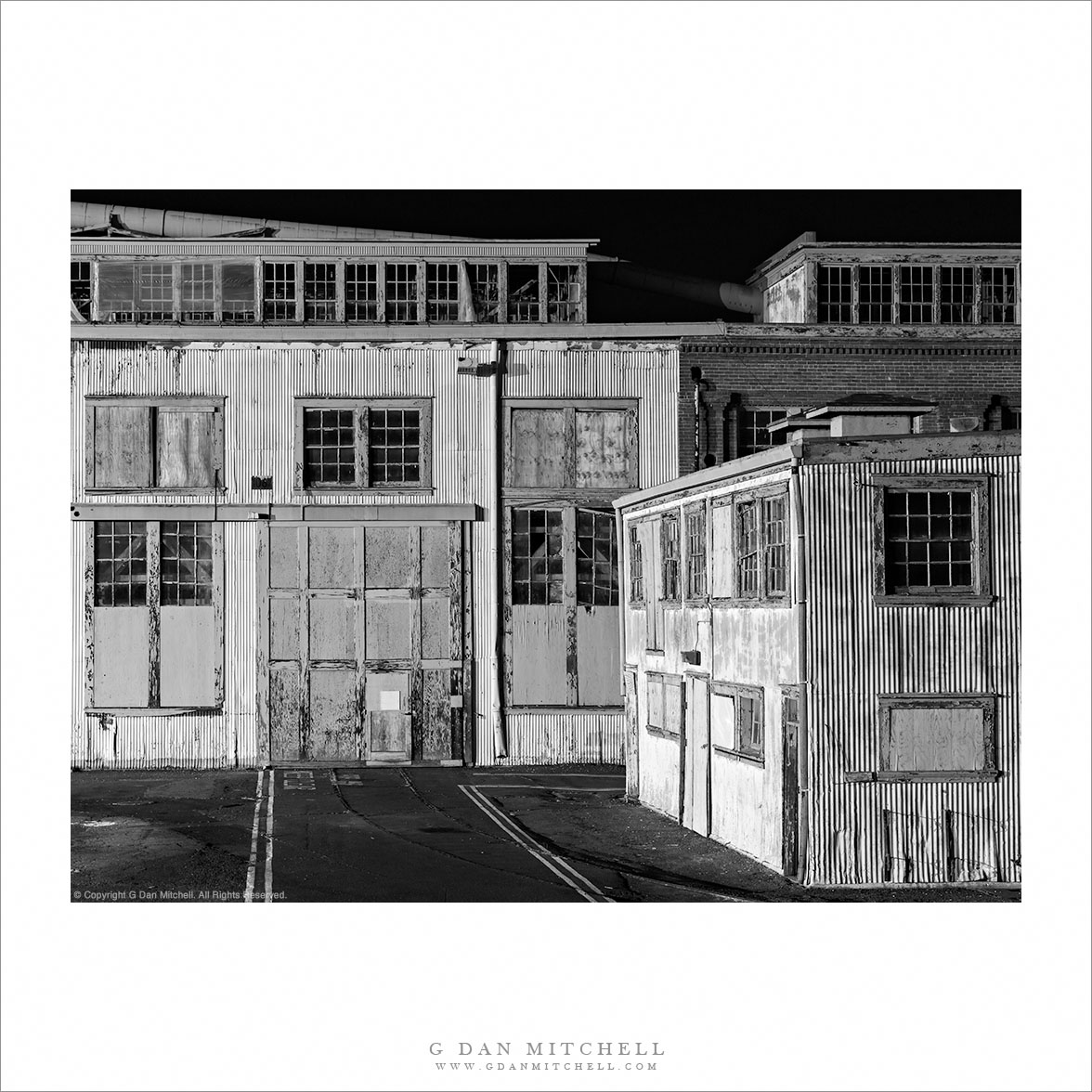
Building 106, Night. Near Vallejo, California. March 16, 2013.
Black and white night photograph of Building 106 and surroundings, Mare Island Naval Ship Yard. (Original post)
I have photographed the historic Mare Island Naval Ship Yard for about a decade now – virtually always after dark. This location has become a sort of night photography mecca in the Bay Area, with lots of photographers working there. Photographers who visit for the first time are predictably drawn to certain obvious (and interesting) subjects, but after shooting there for so long I now tend to seek our more obscure locations. This particular spot is off in a bit of an odd corner, with very strange and uneven light after dark, but I’ve been fascinated by the complex planes and lines of this set of badly weathered buildings. Most of my night photography is in color, since I enjoy working with the unusual and often intense coloration found at night – but this photographs seems to work best in black and white.
Walking Man, Blue Building. San Francisco, California. May 31, 2013.
A man walks into the sun in front of a blue building, San Francisco, California. (Original post)
This photograph may perplex at least a few people who think of me as a “landscape” or “nature” photographer – so let me explain a bit of what I saw in this scene and how it connects to other photography of mine. I can’t say that I was originally conscious of it, but I recognize a thread in my street photography that presents an isolated single figure, often walking, against a background of some urban structures and other street elements. It is, in some ways, a false image of these places, where often there are lots of people and individuals are hard to pick out, but I think that you might be able to read into these photographs something about urban isolation. (Or maybe not…) I’m also intrigued by the very regular and geometric forms of the urban environment, which are much different than the organic forms of the natural world – yet I think of this as a kind of landscape, too. And I was conscious that this scene is also about some very basic color relationships among white, blue, and black. There’s more, but I’ll leave it to you to speculate…
Landscape Photography
Finally, we come to landscape photography. Since this comprises the largest single aspect of my photography it will also be the subject of the greatest number of photographs in this collection. I’m tremendously fortunate to live in an area of California that is full of wonderful landscape photography opportunities and which is a convenient home base for photographing in locations such as the Pacific coastline, the Central Valley, the coastal redwood forests, Yosemite and the Sierra Nevada, and desert areas such as Death Valley. Occasionally I get to travel a bit further afield in the West – to other coast states like Oregon and Washington or further inland to Nevada and Utah. I’ll start with the Sierra…

I had the good fortune late this past summer to spend nine days high in the Sierra Nevada back-country of Kings Canyon National Park, doing photography with my friends Charlie Cramer, Scot Miller, and Karl Kroeber. We packed in to a somewhat remote basin at about 11,000 feet where we stayed for the better part of a week. This allowed us to intensively explore and get to know a region of spectacular beauty – scores of lakes, high peaks, talus fields, sub-alpine tarns, forests, meadows, and more. Being in one location for so long removes some of the pressure that we often feel when we have a short time to photograph, and over this week we would return to subjects as we figured out the best times of day or encountered different conditions of weather or light. The subject of this photograph is simply a beautifully fractured wall of vertical granite as it meets the surface of a perfectly still lake in soft light reflected from surrounding peaks.
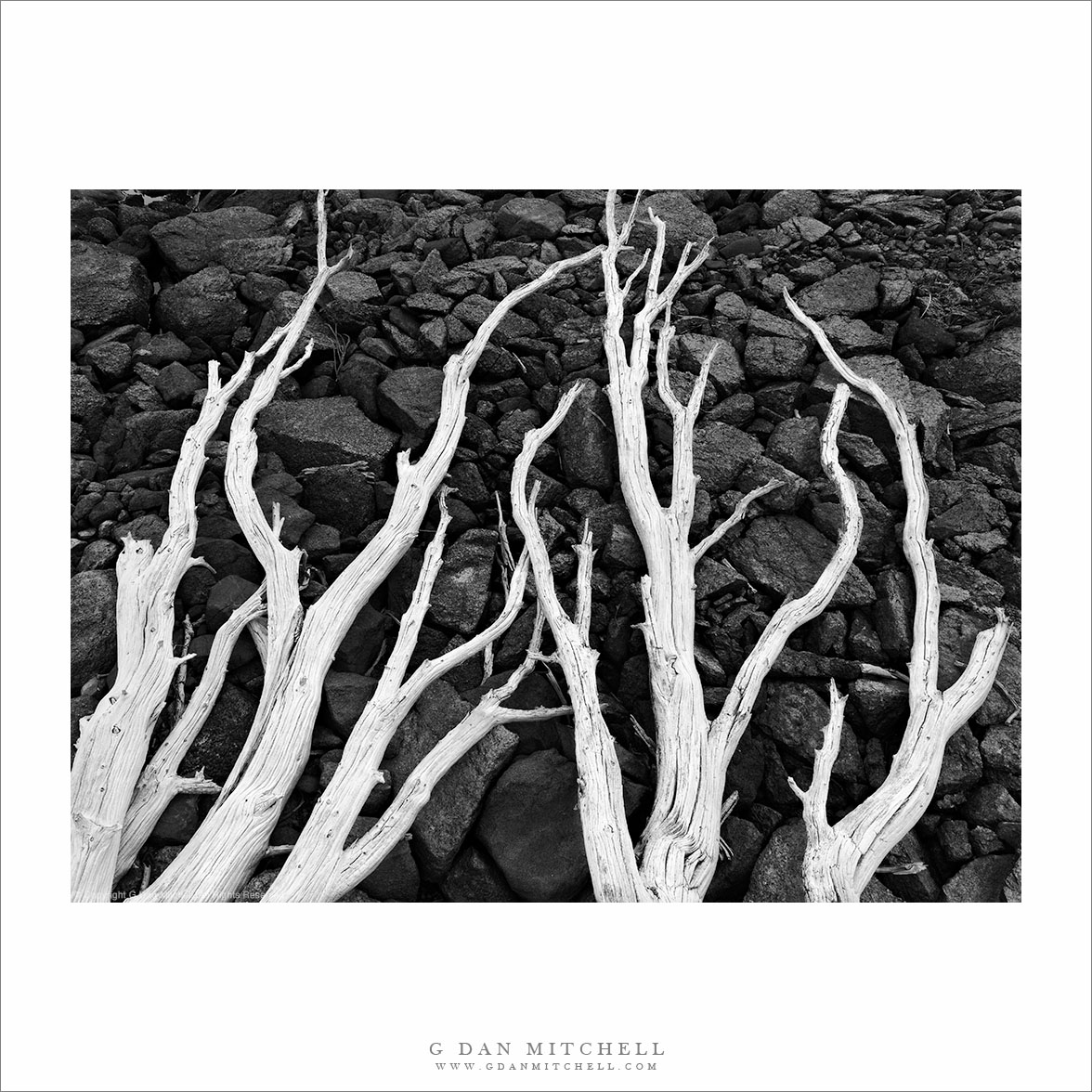
Fallen Snag, Dry Tarn. Kings Canyon National Park, California. September 13, 2013.
The bleached remains of an old dead tree lie on the rocks of a dry subalpine tarn, Kings Canyon National Park. (Original post)
This photograph comes from the same September trip into the Sierra back-country. Perhaps because of the very dry conditions in this third year of California drought, I was thinking about and paying attention to water-related conditions and subjects on this trip. As I walked up from my campsite one day I passed this small tarn, completely dry at this late point in the season, and saw the bleached remains of this old snag laying across it. Its shape made me think of reaching arms or flame or any number of other subjects, and there is a stark quality to the juxtaposition of dead and weathered branches against the darker rocks of the tarn.
Olympic Peninsula Forest. Olympic National Park, Washington. August 16, 2013.
Sunlight filters through dense forest in Olympic National Park, Washington. (Original post)
And now a leap to essentially the opposite climate extreme – the rain forest of Washington’s Olympic National Park. In August we spent a week in the Seattle area, mostly for non-photographic reasons. But we knew we would have a few free days to explore, so we planned to get out and about with camera equipment in the Seattle area and on the return drive through Oregon and Northern California. We got lucky with the weather on this day – instead of a typical cloudy and soggy Olympic Peninsula conditions – which I have experienced – we got sun. Almost too much sun, as it turned out! We initially went to this spot to photograph a waterfall in what we assumed would be in soft, cloudy light. When the illumination ended up being harsher than we expected I noticed that a few passing clouds would occasionally soften the light a bit. I found this composition of dense forest, set up, and waited for a brief moment of modulated light to make the exposure.
Sandstorm, Dunes. Death Valley National Park, California. April 4, 2013.
Strong winds lift clouds of sand high into the air above desert sand dunes, Death Valley National Park. (Original post)
I photograph in Death Valley National Park every year, typically spending a week or so in the park. These dunes are an iconic location seen in many, many photographs from Death Valley. As they say, “they are iconic for a reason” – and while I don’t want to rephotograph them in the ways they are so often seen, I’m always on the lookout for different ways to “see” them. On this visit I encountered a rather strong wind and dust storm. These conditions are no fun to camp or otherwise work in, but they provide some amazing photographic opportunities. (But be careful with your gear!) When this storm blew in, I decided to drive to a more distant part of the Valley and photograph from outside the limits of the dust with a long lens. In this photograph I focused on the compositional form and the texture of the dunes along with the rising clouds of back-lit dust almost obscuring the base of the Panamint range beyond.
Autumn Leaves, Reflection of a Monolith. Yosemite Valley, California.
The face of El Capitan is reflected in the surface of an autumn leaf-filled pool along the Merced River. (Original post)
This is another photograph that might have a lengthy story, but I’ll stick to a few highlights. I was in Yosemite Valley for my annual (and often brief) visit to photograph autumn colors. Autumn is a wonderful time in the Valley. The crowds are mostly gone, the weather is much more pleasant, the yellow and golden and brown colors of fall are everywhere, early storms may leave traces of snow, and I often run into friends and fellow photographers who also love this time of year and are there to photograph and/or teach workshops. I had my eyes on a particular tree along the south side of the Valley, and I had gone back to it in the evening. As I photographed, a car stopped along the road nearby, and I recognized it as that of a photographer friend. We talked a bit and continued photographing, crossing the road to drop down to the banks of the Merced River, where I saw a reflection of El Capitan in the leaf covered surface of a quiet cove. I made a few photographs, working out some of the composition and focus issues and then walked further along the river to photograph other subjects. A bit later the intensifying color on El Cap signified that sunset was near, and it suddenly occurred to me to rush back to this spot and photograph it in that light. I hurried back and fortunately already knew exactly where to put the tripod and how to approach the shot, giving me just barely enough time to make the exposures before shadows fell across the cliff.
Spring Trees, Waterfall Mist. Yosemite Valley, California. May 3, 2013.
Waterfall mist fills the air around sunlit maple trees with new spring leaves, Yosemite National Park. (Original post)
I made this photograph in the spring at the time of peak runoff in this year of anemic precipitation. Since the time my kids were young I have had a tradition of going to The Valley in the spring for at least a day to see the waterfalls in full flow – what the family used to call the “waterfall trip.” To properly maintain the tradition we must begin the visit by hiking to the base of Bridal Veil fall and standing as close as possible beneath the often overwhelming spray and wind, looking up and simply being amazed… and getting very wet. This year the spray was tame, but we decided to walk up the little trail anyway. I left my primary camera gear behind* and carried only a small mirrorless digital camera with a single prime lens. As luck would have it, the unusually dry conditions revealed a view that I had not seen before, with silhouetted branches and limbs, new spring growth clearly visible in the backlight, and the shadowed waterfall in the background. I quickly borrowed a lens* from my wife and made a couple of handheld exposures!*
*Actually, the story is worse than I had remembered. Patty just walked into my studio to remind me that I didn’t actually just borrow a lens – no, I had to borrow her camera, since I had hiked up there with no camera equipment at all! Later we had to go through her memory card to figure out which photographs were mine. Shameful! ;-)
Marsh Grasses and Fog, Dawn. Central Valley, California. November 24, 2013.
Golden dawn light illuminates autumn fog drifting above marshland grasses in California’s Central Valley. (Original post)
Finally, one more “photograph of opportunity” – this one from the San Joaquin Valley. I arrived here before dawn, planning to photograph migratory birds, and heard the magical sound of sandhill cranes off in the distance. I made a few pre-dawn photographs in the fog and then moved on right after sunrise to see if I could find and photograph the cranes. On a foggy day the first “interesting light” can last a lot longer as the conditions of the fog change, and as I came around a turn a few minutes later, drifting later layers of fog were backlit by the saturated golden color of the sunlight – ground fog spilled across gaps in the closest plants, a thicker layer lay across a waterway a bit further on, and in the distance the landscape simply disappeared into the glowing atmosphere. I had very little time to work so I quickly found a composition and made several handheld exposures before the fog began to thin and mysterious scene dissipated.
So, there you have it – a dozen and a half of my favorite photographs from 2013. I hope you enjoyed them, and I would love to hear your reactions. And now… here’s to a 2014 full of beautiful light!
Dan
Links to favorites from a few previous years: 2012 | 2011 | 2010 |2009 | 2008
G Dan Mitchell is a California photographer and visual opportunist. His book, “California’s Fall Color: A Photographer’s Guide to Autumn in the Sierra” (Heyday Books) is available directly from him.
G Dan Mitchell: Blog | Bluesky | Mastodon | Substack Notes | Flickr | Email
All media © Copyright G Dan Mitchell and others as indicated. Any use requires advance permission from G Dan Mitchell.
Discover more from G Dan Mitchell Photography
Subscribe to get the latest posts sent to your email.
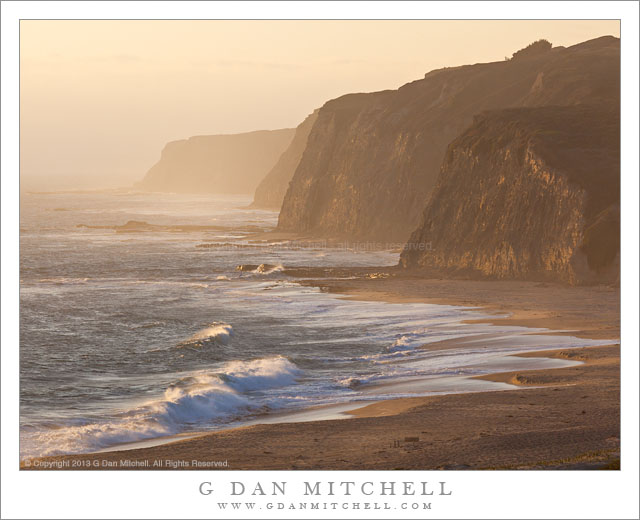
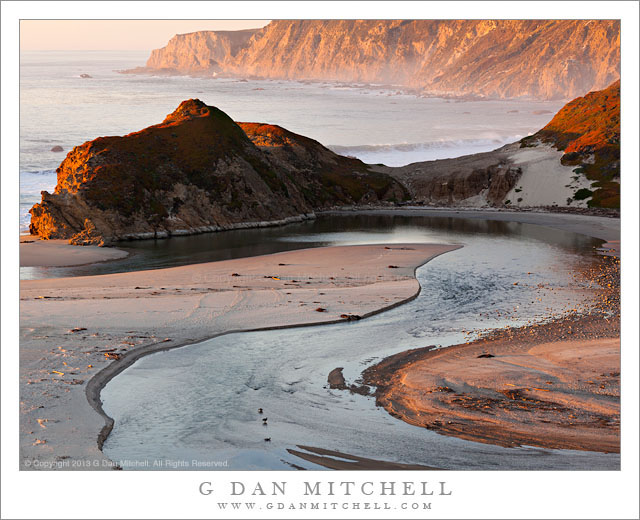
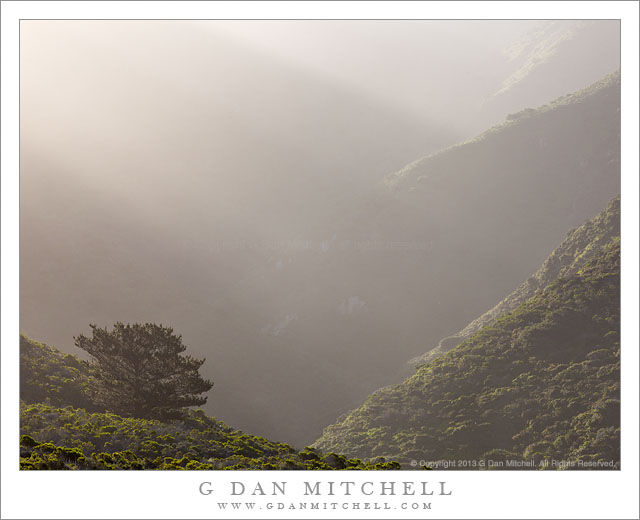
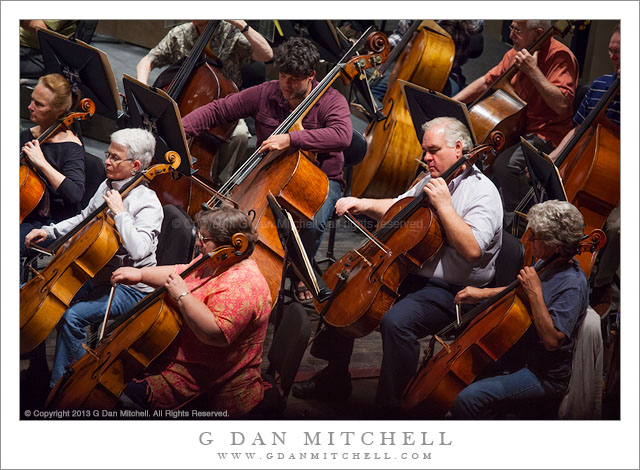
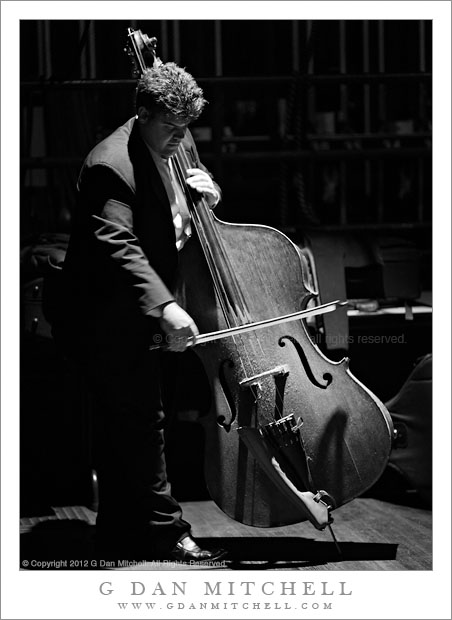

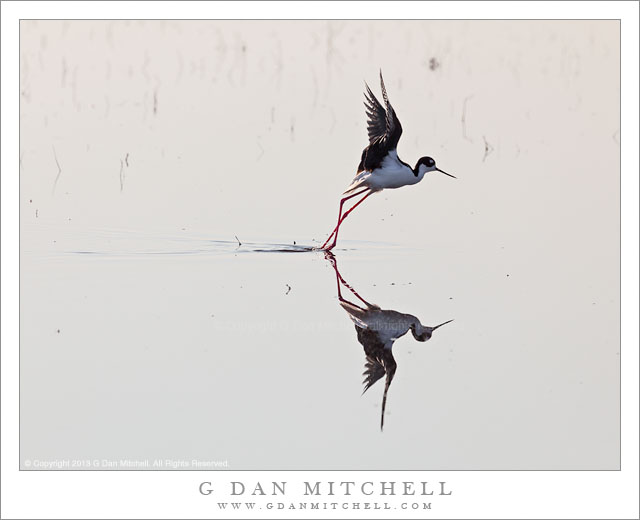
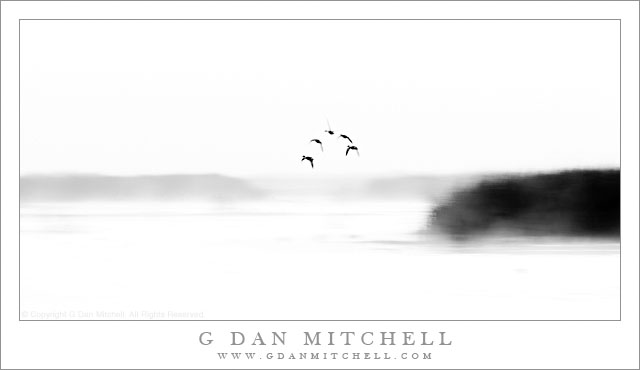

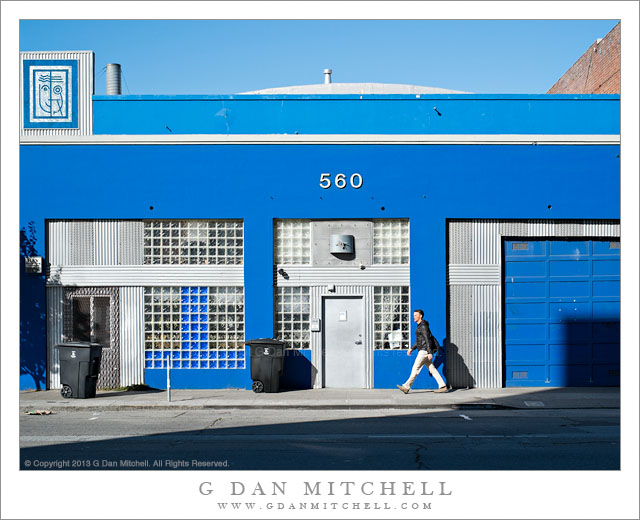
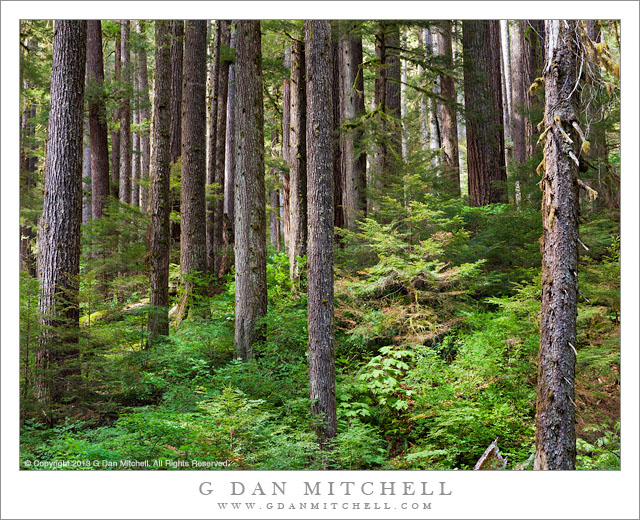
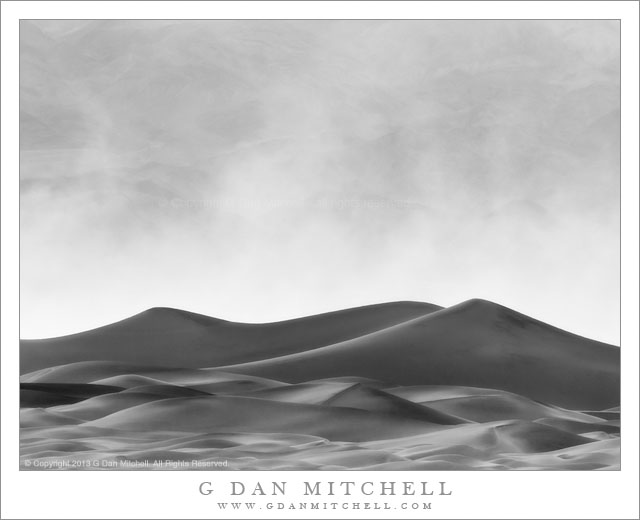

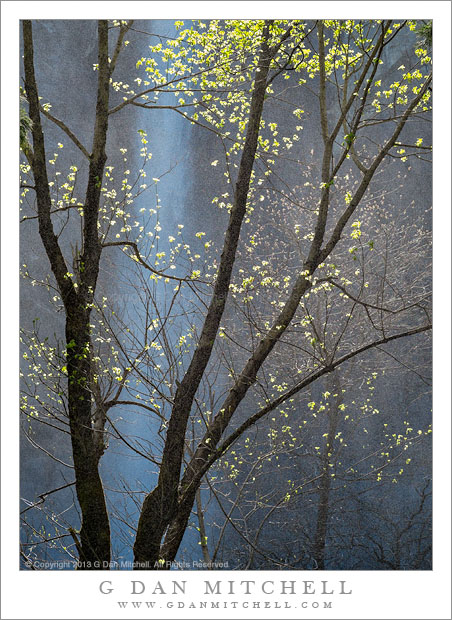

Great stuff Dan. I like that you have a variety of subjects. I’m most drawn to the outdoor/nature stuff I think. I have the same bug you do. I hope I bump in to you some time. I need to get more familiar with the CA coastline.
Reply
Thanks! The range of what I shoot is rather wide – but somehow, to me it all seems linked together via the idea of “seeing photographically,” and how I see in that way.
And, yes, the California coastline is an almost endless source of photographic opportunities.
Dan
Reply
Enjoyed these, Dan. Visited California for the first time in several decades this past October; your images are one of the reasons I did.
The naval yard photo reminded me of an early Dirty Harry movie (the one with Hal Holbrook as the bad guy) which includes a “shootout” in a very similar shipyard. :)
Thank you for sharing.
Larry
Reply
Thanks, Larry. (I hope the state lived up to some of your expectations!)
Dan
Reply
What a great set of images! You make me want to pick up my camera and head for the hills. A lot of time, effort, and distance was travelled to produce these.
Reply
Thanks, Dillan. So… DO pick up that camera and head for the hills! ;-)
Dan
Reply
Great collection of images. Dan. 2013 was very good to you. I must say, I always enjoy the strength and clarity with which you reveal your personal visions. Keep up the great work for 2014. Cheers, – Gary.
Reply
Thanks, Gary. I continue to enjoy your work – which certainly has a style that I recognize immediately as I cruise around online. Thanks for working with us on the G+ landscape community, too. Hope to see you soon!
Dan
Reply
My favorites are the 2 California coast images as well as the elephant seals. I guess that makes 3 California coast images. ;)
As someone who shoots natural landscapes almost exclusively, I always enjoy your city scenes and am intrigued to give it a shot myself at some point. My favorite city photo didn’t make the cut. It was the B&W one from a few weeks ago that showed two guys in a London alley (I think) smoking. I saw that and thought, “Urban Wildlife Photography.”
Happy New Year to you.
Reply
BWP: Thanks! I’ll bet that was the photograph of the curving road leading between a bunch of tall buildings, with a small group of people taking a break outside a hotel restaurant. And, in fact, I do think of those sorts of photographs as “urban landscape,” and it has even crossed my mind that the people might be the equivalent of “urban wildlife!”
Dan
Reply
Thanks a lot everyone. It means a lot to me that a number of you follow my work – and a few of you even photograph with me!
Dan
Reply
Great set of images, Dan. Glad to see some of my favorites made the cut (Fractured Granite). Hope to see you some time this year.
Reply
Thanks, Mike. You beat me with your 2013 Favorites, a set that contained some beautiful images, including many of places I know well!
Dan
Reply
A great set of images Dan! Personally, I’m drawn to the Five Birds,Marsh, Black-necked Stilt Taking Flight, and Fractured Granite, but all are so well seen and captured!
Reply
Thanks, Claudia – and thanks for mentioning the “Five Birds” photograph. I may have written before about the different sorts of responses photographs get and how they are and are not in sync with my own feelings about them. The ideal is that I think a photograph is great and other viewers agree. Another situation is when I think the photo is good but perhaps not outstanding… but viewers go crazy over it. A third is when viewer response is not all that overwhelming about a photograph that I really believe in – perhaps feeling that it is an effective image but that it is either not instantly appealing to those who might view quickly or perhaps just very different from what people expect from me.
The “Five Birds” photograph is in that latter category – a photograph that has not gotten a lot of comment or response, but one that I “believe in” strongly. In a bunch of ways, I think it may be among my best photographs. Time will tell!
Dan
Reply
Excellent set of top 10 images for 2013!
Lot’s of nice images.
My favorites are the spring trees and mist image and the fall leaves with monolith reflection one.
Let’s hope for some winter rains/snows soon in 2014 to help our super dry California landscape.
At least there was water in our favorite flooded fields for the snow geese migration. Just watched a beautiful sunset and partial flyout at dusk just like years past. As avid birders and photographers my girlfriend and I have been there quite a few times and always enjoy our time there. That is also how I recognize the trees in the background of some of yourshots.
Wishing you good light in 2014!
Reply
Thanks, Wayne. And, yes, all of us westerners are very anxious about the third year of this drought and the sense that things are getting worse rather than better. I can’t wait for some real winter rain here in California!
Dan
Reply
It’s hard to pick favorites when (a) the photos are all so good and (b) such disparate subjects are included. That said: Fractured Cliffs, Bill Everett, Black-necked Stilt, and Spring Trees are definitely high on my list.
On another subject…the appeal of Walking Man, Blue Building to you as a landscape photographer. I think it’s the brick wall in the upper right. It reminds you of the slopes of the Sierra.
Reply
Thanks, Dave. Funny that you mention those bricks – and proof of your observant eye. I thought a lot about that bit of not-blue (and not white or black) brick wall in this scene and how to deal with it… and finally decided that a bit of color dissonance with the rest of the scene was actually a good thing.
Dan
Reply
Dan, these are simply the best! Nice work as always. Lets hope the new year will bring good things for all of us!
Reply
Thanks, Martin – and, yes, best wishes to all for a New Year filled with many good things… especially good light!
Dan
Reply
Dan, wonderful selections, I happen to favor your music shots, esp. the B+W one.
Then I am also fond of the silt reflection one, and as I move on down I guess what strikes me is I just love your work and find it totally inspiring.
Reply
Thanks, Patsy. As someone who is admittedly primarily identified as a “landscape” photographer – a genre that I obviously do love – I’m always gratified when some of my photographs of those other subjects speak to a viewer, so I appreciate your comments about the musician photography.
This has been a really interesting and rewarding project for me as it is very different from what I typically photograph (hey, people!) and it ties to my own extensive background in music. (That’s the field in which I obtained my degrees.) I like to think that this “stretch” of doing a new subject will help me continue to grow as a photographer.
Dan
Reply
Truly beautiful images. Inspiring work
Reply
Thank you, Wendy! :-)
Reply
good choices Dan!!! ( many favored by me…you know!!!!)
Reply
Thanks, Celia!
Dan
Reply